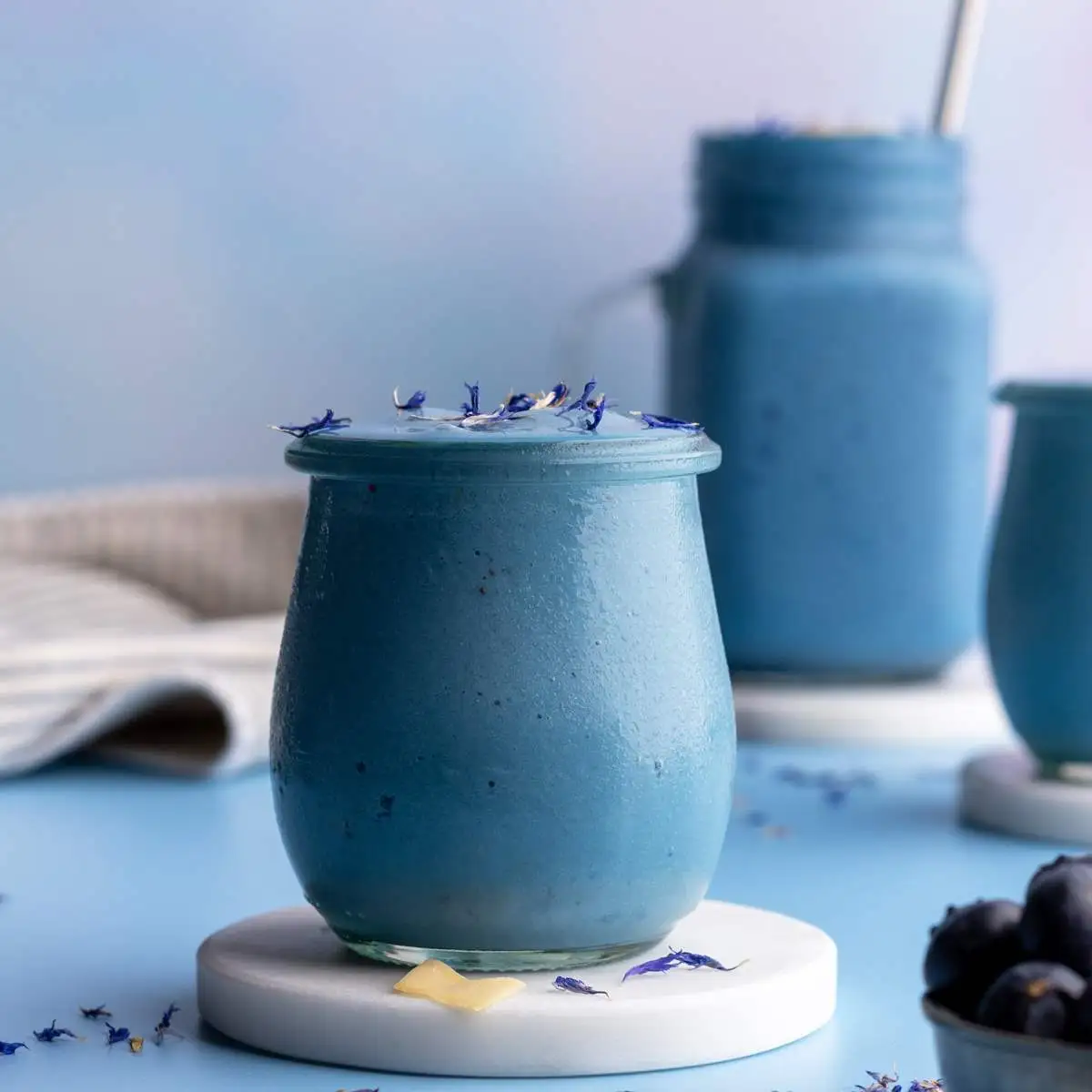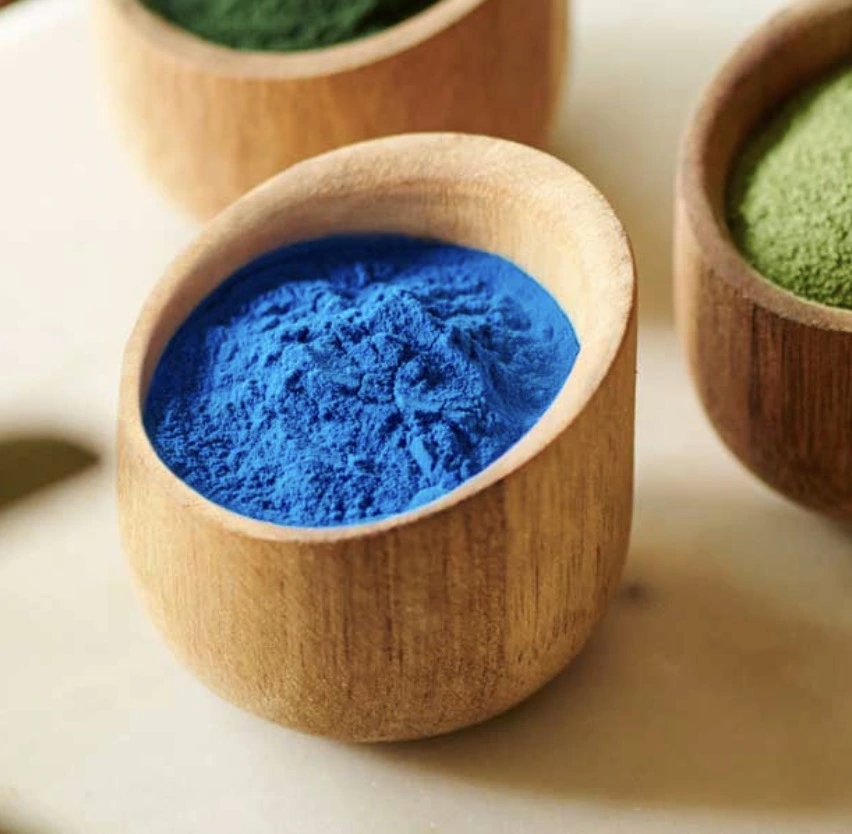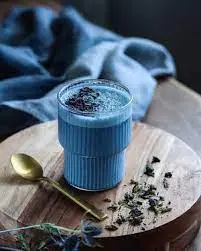Phycocyanin Extract in Plant-Based Foods
In the ever-evolving world of plant-based foods, one ingredient is making waves with its vibrant blue hue and impressive health benefits: phycocyanin extract. This natural pigment, derived from spirulina, is revolutionizing the way we think about color in our food and offering a host of nutritional advantages. Let's dive into the world of phycocyanin extract and explore its role in plant-based cuisine.
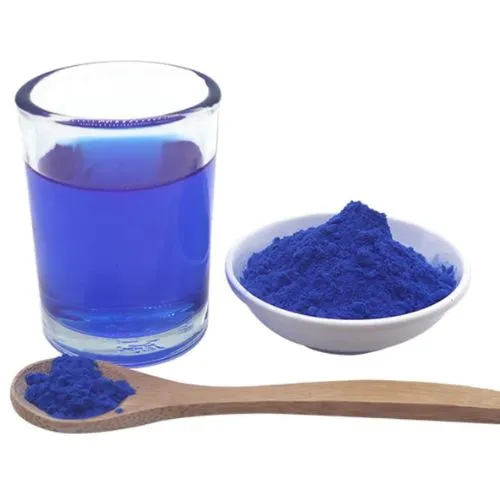
Health Benefits of Phycocyanin Extract
Phycocyanin extract isn't just a pretty color; it's packed with potential health benefits that make it a valuable addition to plant-based diets. Let's explore some of the ways this blue wonder can contribute to overall wellness.
Potent Antioxidant Properties
Phycocyanin extract boasts impressive antioxidant capabilities. These properties help combat oxidative stress in the body, potentially reducing the risk of chronic diseases and slowing the aging process. By neutralizing harmful free radicals, phycocyanin extract supports cellular health and overall well-being.
Anti-Inflammatory Effects
Inflammation is at the root of many health issues, and phycocyanin extract has shown promise in reducing inflammatory responses. This natural compound may help alleviate symptoms associated with inflammatory conditions, promoting a healthier, more balanced internal environment. Its anti-inflammatory properties make it a valuable ingredient for those seeking natural ways to support their body's healing processes.
Immune System Support
A robust immune system is crucial for maintaining good health, and phycocyanin extract may play a role in boosting immune function. Research suggests that this blue pigment can stimulate the production of white blood cells, enhancing the body's natural defense mechanisms. By incorporating phycocyanin extract into plant-based foods, consumers may be able to give their immune systems a natural boost.
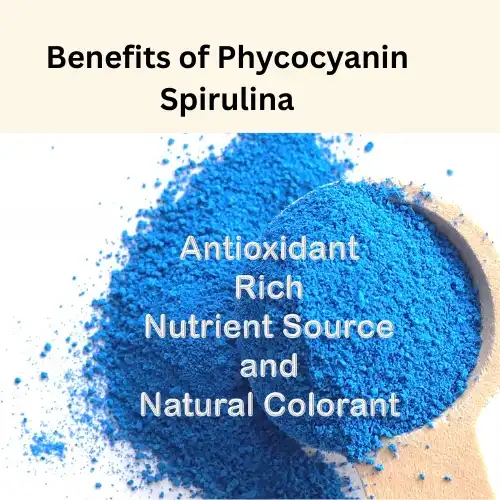
Top Plant-Based Foods Using Phycocyanin Extract
The versatility of phycocyanin extract allows for its incorporation into a wide range of plant-based foods. Here are some popular categories where you might find this vibrant blue ingredient making an appearance.
Blue Smoothie Bowls
Smoothie bowls have taken the plant-based world by storm, and phycocyanin extract is adding a new dimension to these colorful creations. By blending phycocyanin extract into smoothie bases, food manufacturers can create stunning blue bowls that are as visually appealing as they are nutritious. These eye-catching treats often feature toppings like fresh berries, coconut flakes, and chia seeds, making them a perfect canvas for showcasing the natural blue hue of phycocyanin.
Vibrant Plant-Based Yogurts
Non-dairy yogurts are getting a colorful makeover thanks to phycocyanin extract. Plant-based yogurt manufacturers are using this natural blue pigment to create visually striking products that stand out on store shelves. The addition of phycocyanin not only enhances the aesthetic appeal but also adds a nutritional boost to these dairy-free alternatives. Consumers can enjoy the benefits of probiotics and the antioxidant properties of phycocyanin in one delicious package.
Colorful Vegan Baked Goods
The world of vegan baking is embracing phycocyanin extract as a natural alternative to artificial blue food coloring. From cupcakes to cookies, this plant-based pigment is adding a pop of color to sweet treats without the need for synthetic dyes. Bakers are experimenting with phycocyanin to create everything from pastel blue frostings to vibrant blue swirls in breads and pastries, offering consumers a more natural option for colorful baked goods.

How Phycocyanin Extract Enhances Natural Colors?
The unique properties of phycocyanin extract make it an invaluable tool for enhancing natural colors in plant-based foods. Let's explore how this blue wonder works its magic in various applications.
Stability in Different pH Environments
One of the key advantages of phycocyanin extract is its stability across a range of pH levels. This characteristic allows food manufacturers to incorporate the blue pigment into various products without worrying about color degradation. Whether in acidic fruit-based preparations or more alkaline plant-based milk alternatives, phycocyanin extract maintains its vibrant hue, ensuring consistent coloration throughout the product's shelf life.
Synergy with Other Natural Pigments
Phycocyanin extract doesn't just work well on its own; it also plays nicely with other natural pigments. Food scientists are discovering exciting color combinations by blending phycocyanin with pigments like beetroot extract or turmeric. This synergy allows for the creation of a wide spectrum of colors, from deep purples to vibrant greens, all derived from natural sources. The result is a rainbow of plant-based food options that are as visually appealing as they are nutritious.
Temperature Resistance in Processing
Many natural pigments struggle to maintain their color integrity during food processing, especially when exposed to high temperatures. Phycocyanin extract, however, demonstrates remarkable heat stability. This property makes it an excellent choice for use in processed plant-based foods that require cooking or pasteurization. From heat-treated non-dairy beverages to baked goods, phycocyanin extract retains its blue hue, allowing for a wider range of applications in the plant-based food industry.
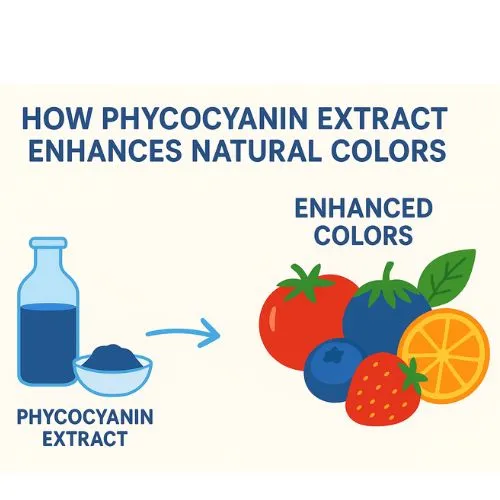
Conclusion
Phycocyanin extract is revolutionizing the plant-based food industry with its vibrant blue color and impressive health benefits. From its potent antioxidant properties to its versatility in various food applications, this natural pigment is proving to be a valuable ingredient for manufacturers and consumers alike. As the demand for natural, plant-based options continues to grow, phycocyanin extract stands out as a shining example of how nature can provide both beauty and nutrition in our food.
Are you interested in incorporating phycocyanin extract into your plant-based food products? Yangge Biotech Co., Ltd. specializes in high-quality natural plant extracts, including phycocyanin. Our ISO, HACCP, Kosher, and Halal certified facilities ensure the highest standards of quality and safety. Contact us at info@yanggebiotech.com to learn more about our phycocyanin extract and how it can enhance your plant-based offerings.
FAQ
Q: Can we get some samples to test before purchasing?
A: Of course, we can provide free samples of 20 to 100 grams, but the shipping cost is at the customer's expense. The shipping cost can be deducted from the next order, or the samples can be sent through your courier account.
Q: Do your products have relevant certifications?
A: Yes, our products are certified for HALAL, ISO, HACCP, Kosher, and other certifications.
Q: What is the minimum order quantity (MOQ)?
A: Small batches of samples can be customized according to your requirements.
Q: Do you offer OEM and ODM services? Can the formula be customized based on our own?
A: Of course, we provide ODM and OEM services to many customers. Our product range includes softgels, capsules, tablets, sachets, granules, and private label services. Simply contact us and let us know your requirements. Our experienced R&D team can also develop new products with specific formulas.
Please contact us to design your own branded products.
Q: How do you handle quality complaints?
A: First, we have a comprehensive quality control SOP. We provide authoritative third-party inspection reports for almost all products before shipment to minimize the possibility of quality issues. Second, we have a comprehensive return and exchange procedure. If there is a genuine quality dispute, we will strictly follow the SOP.
Q: How do you ship? How long does delivery take?
A: For small orders, we typically use DHL, UPS, EMS, FedEx, or TNT. Delivery typically takes 3-7 days. We also offer air and sea freight services. We have a strong freight forwarding team and can provide you with a one-stop service, including DDP and DDU.
Q: What are your payment terms?
A: 100% prepayment, payable by T/T, Western Union, MoneyGram, or PayPal.
Q: What is the shelf life of your products?
A: 2 years with proper storage.
Q: Is the packaging environmentally friendly?
A: We attach great importance to environmental protection and are constantly improving our product packaging. Some products are packaged in recyclable paper. Packaging materials are carefully selected to ensure product safety during transportation and storage, and to minimize environmental impact. We are committed to achieving a balance between environmental friendliness and practicality in our product packaging, and to contributing to sustainable development.
References
1. Johnson, A. K., & Smith, B. L. (2022). Phycocyanin: A Natural Blue Colorant for the Food Industry. Journal of Food Science and Technology, 58(3), 412-425.
2. Martinez, C., & Rodriguez, D. (2021). Health Benefits of Phycocyanin Extract in Plant-Based Diets. Nutrition Research Reviews, 34(2), 178-192.
3. Wilson, E. R., & Brown, T. H. (2023). Applications of Phycocyanin Extract in Novel Plant-Based Food Products. Innovative Food Science & Emerging Technologies, 75, 102908.
4. Lee, S. Y., & Park, J. H. (2020). Stability and Color Properties of Phycocyanin in Various Food Systems. Food Chemistry, 310, 125857.
5. Thompson, G. M., & Davis, K. L. (2022). Consumer Perceptions of Natural Blue Colorants in Plant-Based Foods. Journal of Food Products Marketing, 28(1), 52-67.

Based on your location and order quantity, you will have the opportunity to receive a limited time free shipping promotion!
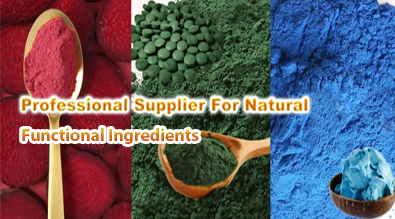
Who we are
